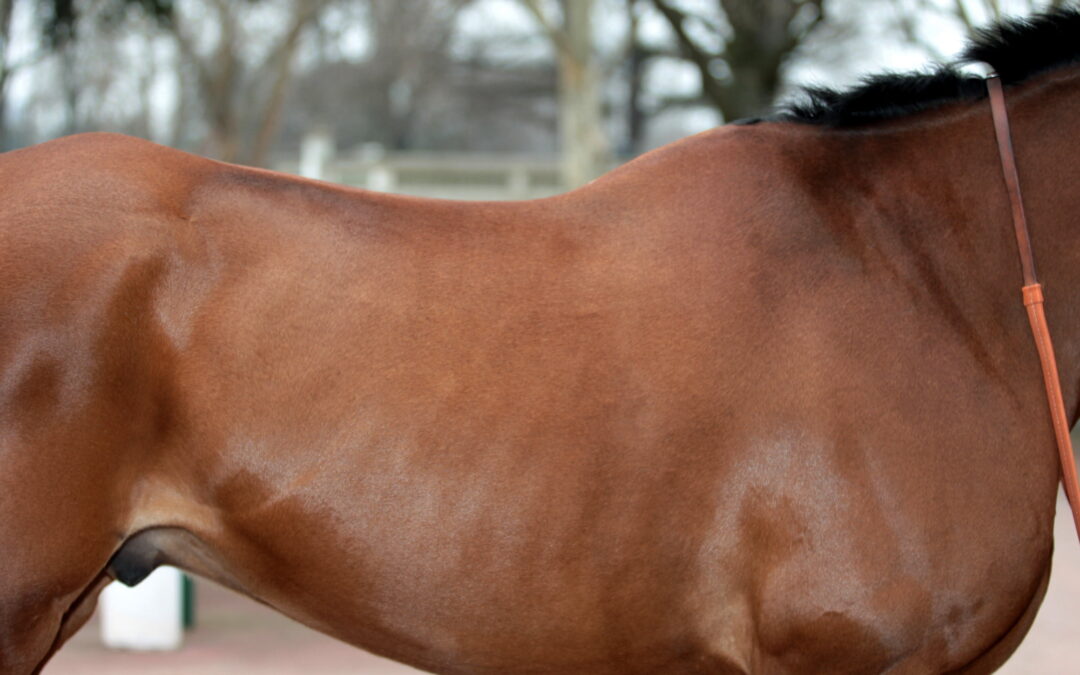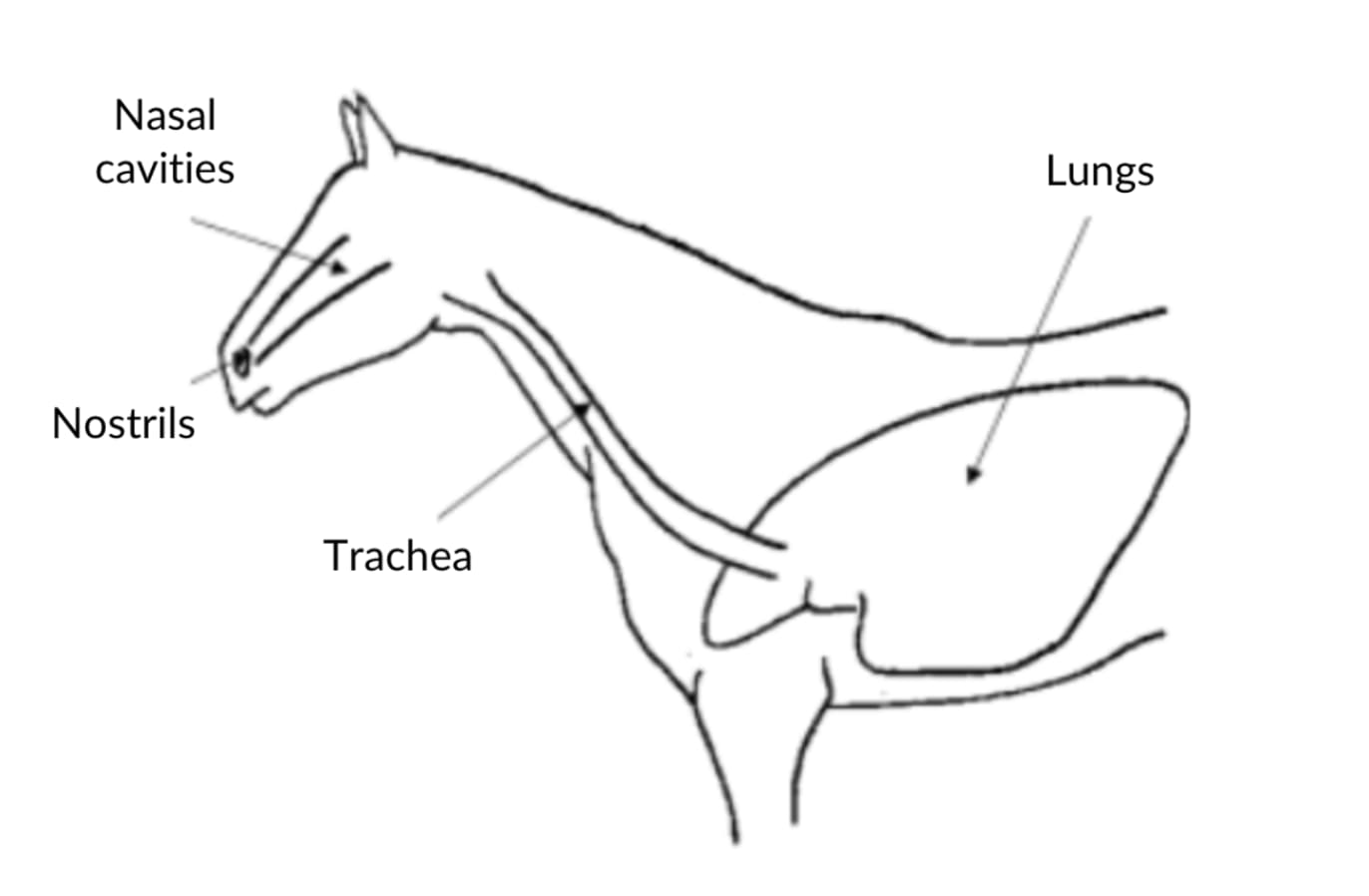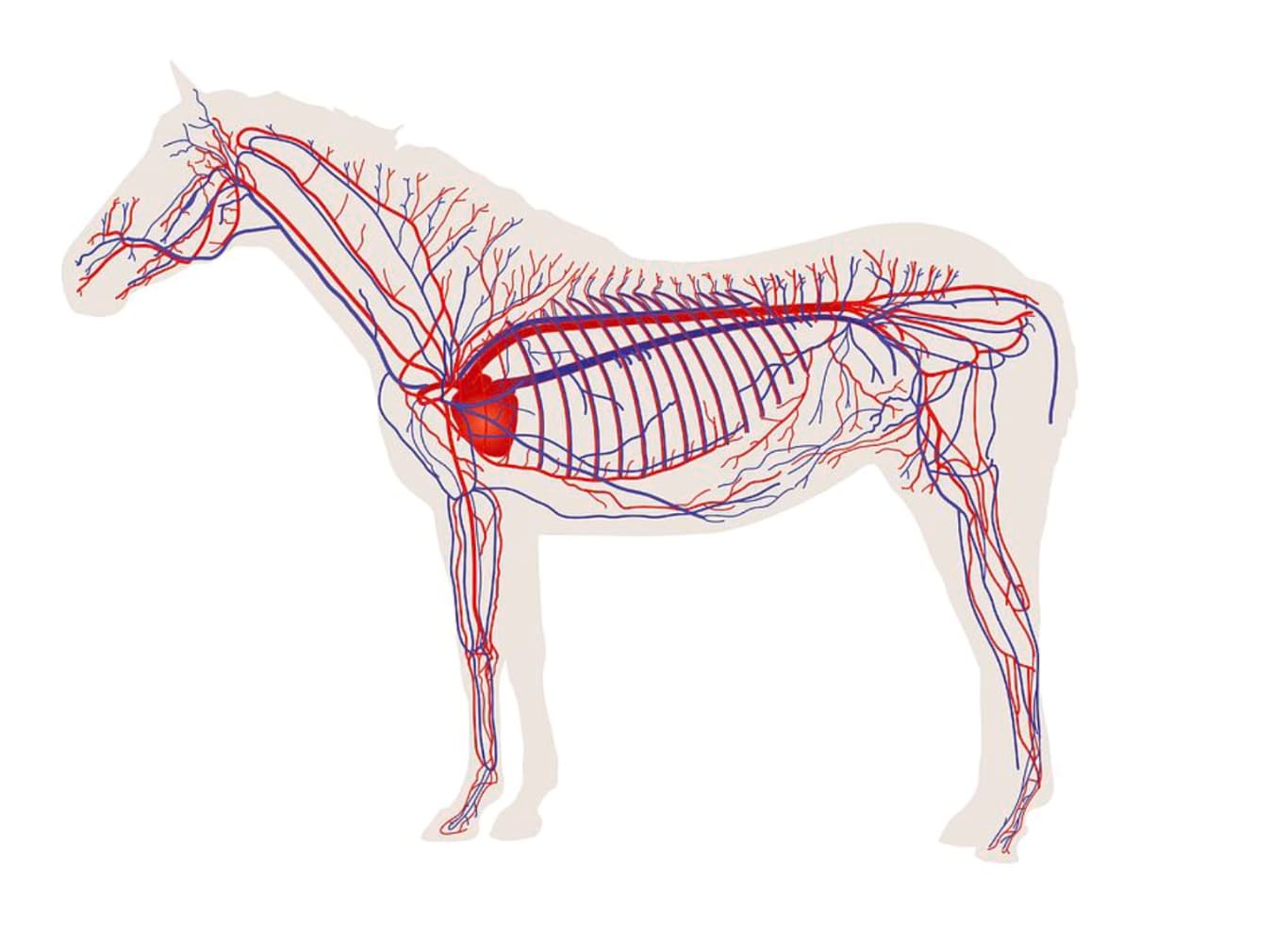To ensure its proper functioning, the horse’s body has three key systems: the respiratory, cardiovascular and muscular systems.
It is these systems, combined with his extraordinary physique, that enable him to perform at an exceptional level and with varying degrees of intensity. He is also capable of performing in several disciplines: dressage, show jumping, eventing, western, polo, horse racing etc.
How do these metabolisms work? What roles do they play in the racehorse’s body?
The respiratory system of the racehorse
Its role
Thanks to the respiratory system, the horse breathes the air in his environment. It ensures the oxygen supply to its organs. However, unlike humans, the horse can only breathe through one way, his nostrils. It is also one of the most fragile systems. Therefore, it is important to be aware of potential respiratory pathologies, which can be frequent in racehorses.
This system influences the activity of all other organs, including the cardiovascular and muscular systems.
How it works
The horse’s respiratory system is made up of several components:
- Nostrils: the only canal that allows the horse to inhale air from his environment.
- Pharynx: allows air to flow between nostrils and the larynx.
- Trachea: duct that ensures the passage of air to the bronchi.
- Larynx: organ that allows the horse to vocalise, but also to prevent the aspiration of food into the trachea.
- Bronchi and bronchioles: are found at the end of the trachea, which then divides into two, to carry air to the lungs.
- Lungs: store the air inspired by the horse, which is then used by the body.
Diagram of the horse’s respiratory system (Source: lacompagniedesanimaux.com)
The air breathed by the horse goes first through the nostrils. It is through the nostrils that the air comes into contact with a vascularised mucous membrane, which warms the inspired air. The air then goes through the pharynx and the larynx, circulates in the trachea, to arrive at the bronchioles of the horse, after a passage in the bronchi. The air then fills the alveoli, which is where the exchange between blood and gas takes place.
This is where the exchange between the outside and the horse’s body can take place. The oxygen in the air feeds the horse’s body through his blood, releasing carbon dioxide, which is then released outside the horse’s body through breathing.
The rhythm of the horse’s breathing varies according to his activity:
- Horse at rest: 10 to 12 movements
- Horse at walk: 18 movements
- After a 5 minute trot: 52 movements
- After a 5 minute gallop: 60 to 70 movements
The respiratory system is the pillar of all the other systems because it supplies the body with oxygen to meet the needs of the organs that consume it for their activity.
The cardiovascular system of the racehorse
Its role
The cardiovascular system is a key organism in the horse’s body. Considered as an engine, it delivers oxygen from the respiratory system to all cells in the body through the blood.
Thanks to this system, the muscles are supplied with oxygen. Once it is delivered to the muscles, this oxygen is burned to produce energy, and eliminated as waste in the form of carbon dioxide.
An efficient cardiovascular system is very important because it allows the circulation of oxygen, but also the transport of anti-infectious defence elements that are necessary for the good functioning of the horse’s entire organism. It is in the blood that we find the presence of white blood cells and antibodies, which play an important role in the immune system against infectious micro-organisms and other foreign substances.
How it works
Blood circulation is ensured by two main components:
- The heart: serves as a pump for the circulation of blood in the body.
- The blood vessels: represent the pathways for the blood to travel from the heart to the muscles and back again.
The horse’s cardiovascular system (Source: Science Photo Library)
As soon as the horse’s body becomes active, the blood goes through the muscles. This blood becomes low in oxygen because it has been absorbed by the muscles, which need it to work. However, this blood also becomes rich in the waste products released by these muscles: carbon dioxide.
The blood is then ejected from the heart to the lungs, where an exchange will take place. The carbon dioxide can be transferred from the blood to the lungs, while the oxygen is transferred from the lungs to the blood. The blood can then return to the heart, where it will be released to the horse’s entire body, and so on.
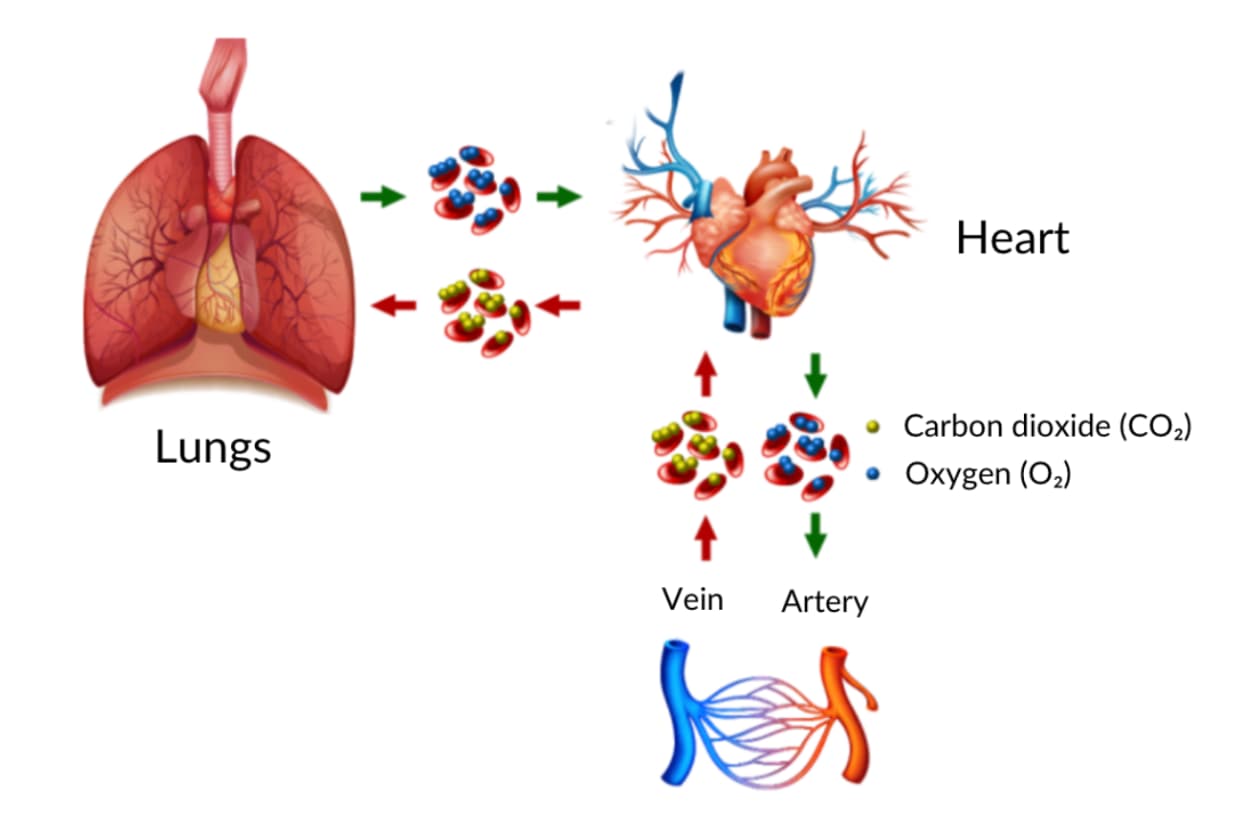
Gas exchange between the lungs and the heart (Source: Parlons Sciences)
The cardiovascular system acts as a motor that brings oxygen, contained in the blood, to the whole body.
Active muscle metabolism
Its role
The role of the muscle is to produce a movement by conversion. It will take chemical energy, in the form of oxygen, and convert it into mechanical energy. The oxygen supplied by the respiratory system, and transported by the cardiovascular system, then reaches the muscles to enable them to move. The muscles are attached to the bones by tendons, which also allow the bones to move.
Two categories of muscles can be identified in the horse:
- Striated muscles or red muscles: the horse’s locomotion depends on these muscles which function by voluntary contraction.
- The smooth muscles or white muscles: they are responsible for the internal functioning of the horse, such as his digestive system, which function by involuntary contraction.
➡️ To learn more about the muscular physiology of the racehorse we recommend this article.
How it works
When a nerve stimulates a muscle, the horse’s body will release calcium that is stored in his cells. It is the calcium that helps the muscle proteins to do the work of muscle contraction that occurs as soon as the horse stimulates his muscles.
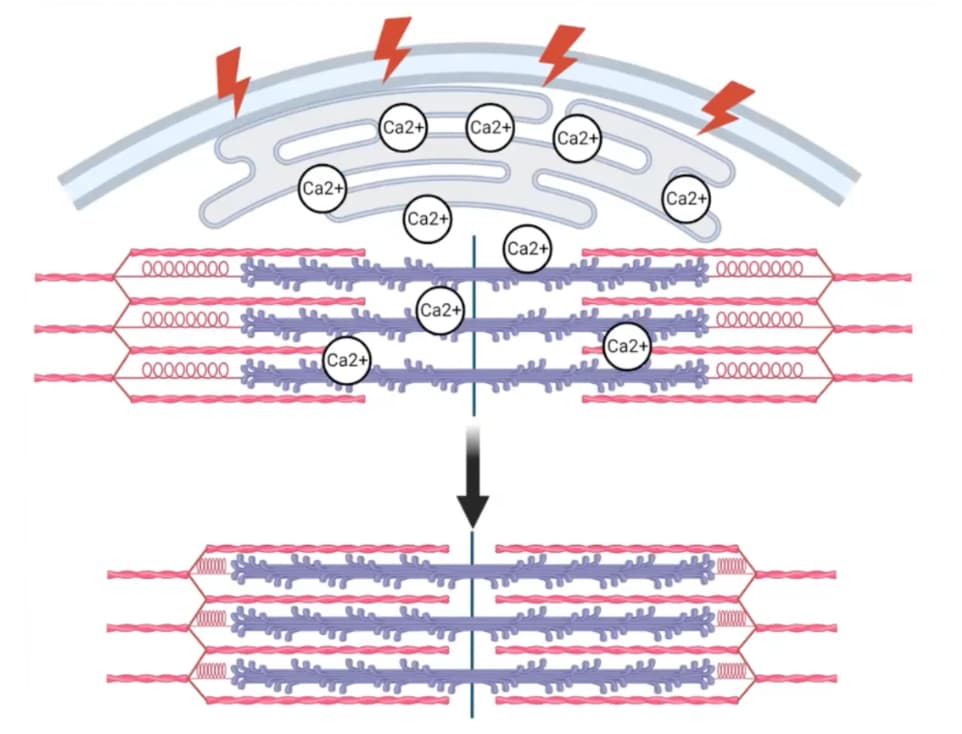
Diagram of calcium release in muscle cells
Once contracted, the muscle must also relax to produce a movement. Every movement consists of a phase of contraction and then relaxation of the muscles.
The first step in relaxing your muscles is for the body to stop releasing calcium. The calcium then has to be pumped out of the muscle cells and redirected to its storage areas. This is a very energy consuming process for the horse, as the calcium is pumped out very intensively to clean up all his muscles.
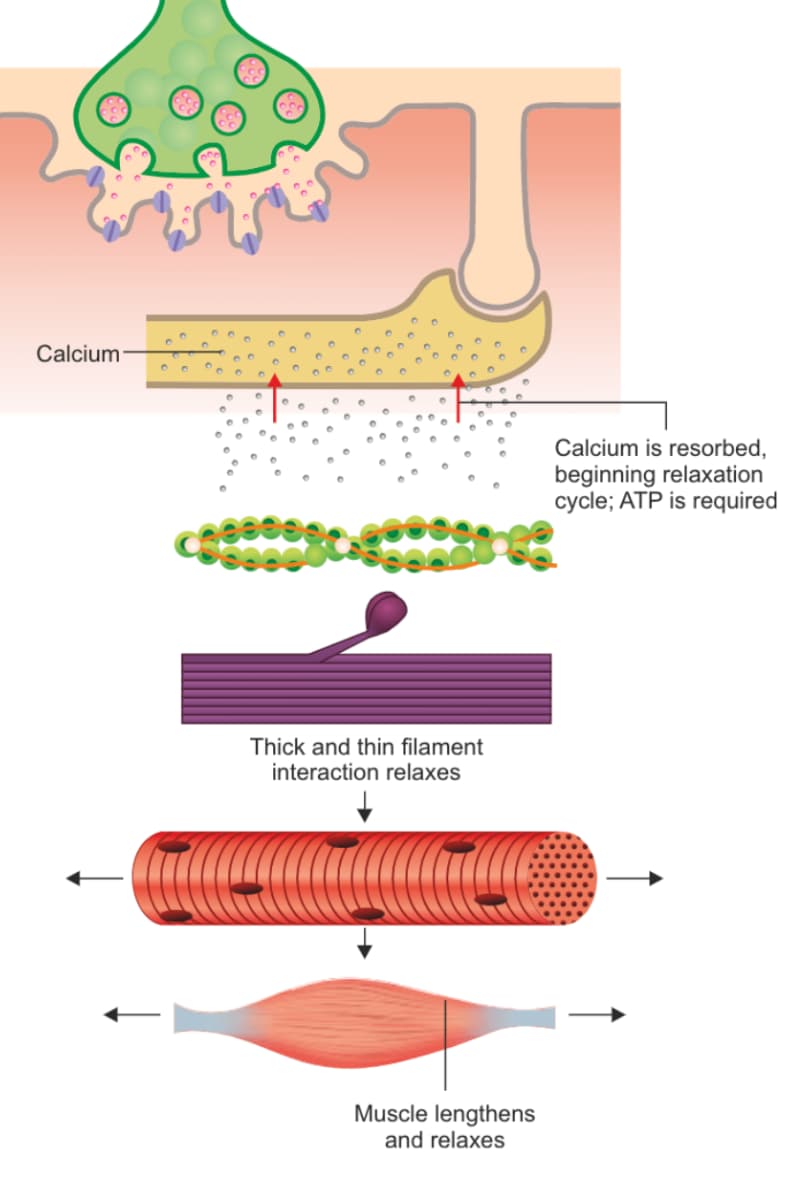
Diagram explaining muscles and calcium during relaxation
The muscles must be prepared for this relaxation. Horses that are not sufficiently prepared for muscle relaxation may develop contractures. The horse may show stiffness or pain which must be handled with care. A horse that is not prepared for sustained effort and continues to be overworked, even though he has not returned to a state of total relaxation, can lead to muscle tears, tendonitis or elongation.
It is for this reason that the horse’s warm-up is important, because it allows the horse to prepare his muscles to receive the effort, as much by contraction as by relaxation.
The active muscle metabolism is a convertor, which allows chemical energy in the form of oxygen to be converted into mechanical energy which is driven by the muscles.
Conclusion
It is thanks to these three fabulous systems, both complex and fragile, that the horse can be the formidable athlete that he is. We can see that these three systems are complementary and cannot replace each other. This is why it s important to ensure that each of the systems works properly, in order to not disrupt the natural balance of the horse’s body.
References
Hippologie. Available at: http://s403403540.onlinehome.fr/anatomie/respiration.htm (Accessed: 29 June 2023).
L’appareil Respiratoire du Cheval – Audevard. Available at: https://audevard.com/espace-sante-cheval?slug=lappareil-respiratoire-du-cheval (Accessed: 29 June 2023).
(Hippologie : L’appareil circulatoire, Le cœur et la prise de Sang. Available at: https://equitation59.wixsite.com/blog/post/hippologie-l-appareil-circulatoire-le-c%C5%93ur-et-la-prise-de-sang (Accessed: 29 June 2023).
Anatomie du Cheval (no date) L’anatomie du cheval dans son ensemble – Hippologie.fr. Available at: http://www.hippologie.fr/anatomie-du-cheval (Accessed: 29 June 2023).
Key words: respiratory system, cardiovascular system, muscles, race horse

